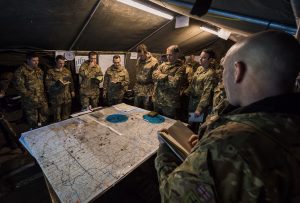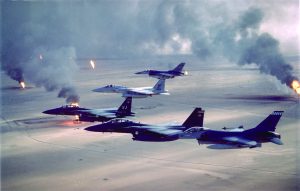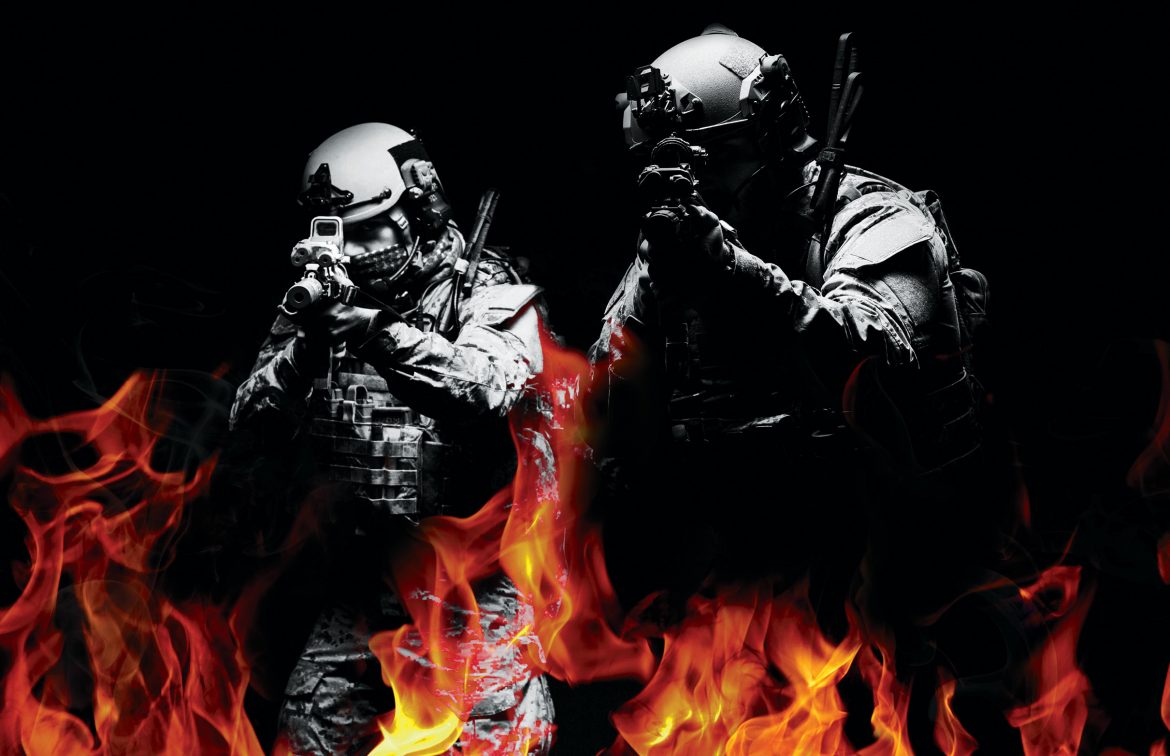Most modern military organizations claim that doctrine is central to everything they do. Yet the actual concept of military doctrine is somewhat elusive—it means different things to different audiences. Militaries are often awash with competing and contrasting terms, ideas, buzzwords, and concepts. Defense analysts and commentators usually invoke doctrine as something militaries and their leadership must craft and possess but usually say no more about what a doctrine should be composed of and how it can be efficaciously disseminated within an organization.
Readers of this publication may have heard the phrase that “doctrine is only but a guide.” Yet for others, doctrine is thought to be a highly prescriptive set of procedures, especially at the tactical level. It is true that military doctrine has its roots in the early drill manuals of armies long now in the past, but the modern conception of doctrine has increasingly moved away from being overly be prescriptive and dogmatic and has become more an articulation of shared beliefs within the military organization about how it should fight and, importantly, how to prepare to do so.

Doctrine is more than a conceptual framework for employing military force during hostilities, however. It also defines how an armed force trains in peace and the weapon systems that it procures. Military organizations that face the prospect of actual combat need a set of institutionalized principles about how to fight. Doctrine constitutes the most visible expression of a military’s “belief system.” A useful and common extrapolation of military doctrine is that it is a fundamental set of principles that guides military forces as they pursue national security objectives.
Such doctrine exists, as Barry Posen, perhaps the leading scholar on military doctrine, reminds us, “at almost every level of military activity, from the lowly infantry company to the nuclear forces of a Cold War superpower.” At the higher-end of military activity, however, it remains distinct from strategy, though the two—strategy and doctrine—are necessary partners. Strategy decides how a nation’s goals are to be advanced and secured. Doctrine can be conceived as a bridge between such strategic thought and action. It interprets strategic direction given to it by the nation’s political leadership into functional guidelines for action. In this idealized process—for often this chain of strategic thought to appropriate military does break down—the military develops the conceptual framework (i.e., its doctrine) for undertaking military operations to achieve the national security goals it has been set. In this functional understanding of doctrine—and of most relevance to military professional tasked with either crafting such principles or absorbing them—it should provide useful guidance on how to fight.

Doctrine and military performance
Senior officers and defense officials claim that a coherent and efficacious military doctrine is sine qua non for generating and employing effective military force. But it can be extremely hard to make a viable doctrine, especially as warfare evolves. Military doctrines are nothing if they are not institutional beliefs about what works in war. To get the belief system right can mean victory in war and organizational wellbeing in peacetime. Getting it wrong means sub-optimal operational outcomes, or even defeat, and organizational dysfunction. Fortunately for the world, military organizations spend years with no reliable test of the efficacy of their doctrines.
War is a special environment, characterized by great uncertainty and violence. The purpose of mutual destruction gives warfare an inherent competitive quality far more intense than almost any other aspect of human activity. Military organizations develop doctrine to help them navigate through this uncertain and dangerous environment. Deep uncertainty produces a need for learnt, shared, and routinized practices. As military organizations—and especially land forces—are incredibly complex, a high value is placed on striving for organizational cohesiveness. A stable, agreed way of warfare, a doctrine, is one way to engender that cohesion.
Sources of doctrine
From where does doctrine emerge and how does it evolve over time? Ideally, a military doctrine will be rationally crafted to best address the national security imperatives of the nation. In practice, a range of factors influence the ultimate composition of doctrine. If the armed forces of any country are a product of the society that produced them, national culture is surely significant in shaping doctrine. As Michael Howard noted, “The measures which communities adopt for their defense are intimately connected with their internal political structure, and in consequence with their traditions and their ideas.” Arguably, when it comes to the content of a nation’s military doctrine culture has independent explanatory power. National culture could influence, for example, the choices military’s make between offensive and defensive doctrines, the emphasis they give to mass on the battlefield over precision, or technology versus people.
Such culturally driven sources in doctrine, which should produce widely different doctrines from place to place, competes with the need to identify and import best practices from the marketplace of war. States and their militaries also—and some would argue, must—try to emulate the successful performance of others. As Kenneth Waltz contends: “Contending states imitate the military innovations contrived by the country of greatest capability and ingenuity.” The Chinese People’s Liberation Army, for example, carefully studied the US military’s performance in the 1990-91 Gulf War to learn and adopt what worked so well into its own future fighting system.

For a long time, it was assumed that a nation’s military doctrine changed in an evolutionary manner, through a longue durée process of incremental adjustments. In one respect, this should naturally be the case. Doctrine, as a fundamental set of principles that guides military forces, would lose any useful purpose if it were in a state of constant flux. Nonetheless doctrine that is too rigid will become stale; it needs to be receptive to sources of change in the external environment if it is to remain relevant.
One source of change is of course new technology. The introduction of new technology can revolutionize the character and even the nature of war. Technology is only an enabler and what really matters is how doctrine is adapted to take advantages of any given technology. In the interwar period, all major powers had tanks, aircraft, and radios but it was Germany’s doctrinal innovation that turned these new technologies into the potent weapon of Blitzkrieg.
A second component of doctrinal change is the influence of formative experiences. Military organizations are greatly influenced by the perceived successes and failures of their most recent operational experience. This can be taken too far; militaries are often accused of fighting the last war. The challenge to any armed force is the need to distil the continuities from the discontinuities from new experiences. The logic would then be to build a new doctrine on the foundation stone on the former.
Cascading doctrine throughout the organization
It is vital that military practitioners, strategists, and statesmen all have a well-developed understanding of a military organization’s “belief system.” Doctrine as a military’s institutional thought is meant to be a shared conceptual framework to enable battlefield coordination and cooperation. Before the development of separate doctrinal publications, many nations expressed their military philosophy through regulations. Many modern militaries have since crafted and disseminated discrete doctrinal publications. Making knowledge of a military’s institutional belief system explicit is vital. If this intellectual construct is not clearly articulated buzzwords will proliferate and performance will falter.
The word doctrine comes from the Latin term doctrina, meaning teaching. The etymology of the word in turn raises the question, who is doctrine taught to? Organizations’ leaders carefully consider the “best way” to accomplish sub-tasks and these should cascade down from and find their wellspring in doctrine. These “best ways” are in turn locked in through standard operating procedures (SOPs) and more elaborate programs that combine SOP’s in standard routines or patterns. New members are trained in these programs and should achieve advancement as a result of their mastery of these SOPs and programs. In this way, an effective military doctrine influences all levels of a military organization.

Conclusion
Doctrine must bring some coherence to the inescapable uncertainties of war. But far from being adaptative, doctrine is often too rigid and stultifies innovation, leading to poor operational outcomes. Military leaders must be open to change doctrine when new or better approaches to fighting became apparent. There is an onus on senior commanders to ensure that doctrine changes as a nation’s circumstances evolve and as the character and the conduct of war dictates. The danger is to rely on its permanence and fail to re-evaluate its relevance in the light of a new situation. In sum, doctrine must strike a balance between the need for an ‘agreed way of war’ to get the organization through conflict but it must also be responsive to the possibility of real change in the world.
By : Ash Rossiter,
(Assistant Professor of International Security, Khalifa University)













